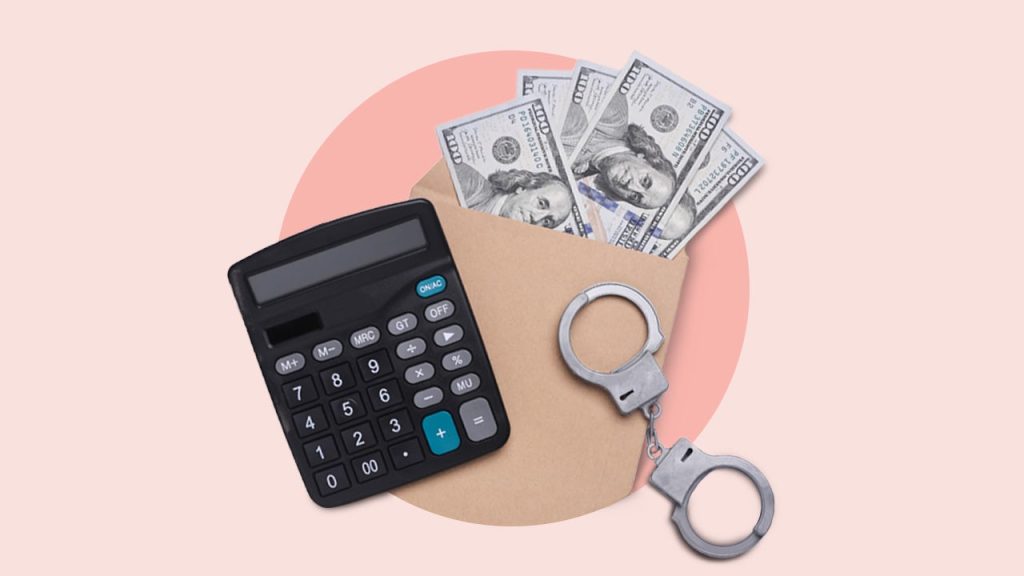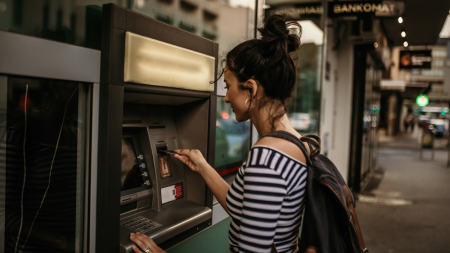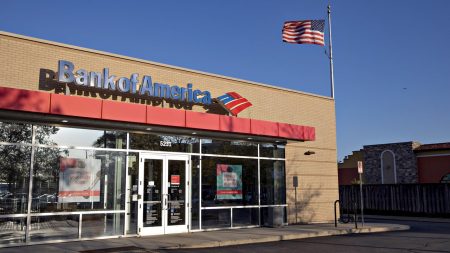Key takeaways
- HELOC fraud is defined as someone stealing funds from an existing home equity line of credit or opening a new HELOC account in a homeowner’s name for the purpose of withdrawing funds from it.
- Common scams include account takeovers, identity fraud, title fraud, and even the creation of counterfeit HELOC checks — all typically carried out via phishing or stolen data.
- Warning signs of HELOC fraud include unfamiliar transactions, missing statements or sudden increases in your HELOC balance or minimum payments.
- You can protect yourself from fraud by monitoring your account, setting up account alerts, and reporting any suspicious activity or draws promptly.
Home equity lines of credit (HELOCs) are a common way for homeowners to borrow against the equity in their homes. But while HELOCs offer flexibility and relatively low interest rates for homeowners, they’re also becoming a lucrative target for thieves.
The reason? A HELOC can offer hundreds of thousands of dollars, borrowed against the equity that homeowners have accumulated in their property. And they have considerable stakes to draw from these days: In fact, according to a recent Intercontinental Exchange (ICE) “Mortgage Monitor Report,” the average mortgage-holding homeowner currently has about $203,000 worth of tappable home equity. The size of HELOC credit lines and balances has grown steadily over the past year, too.
With the rise of mobile banking and online document storage, the risk of HELOC malfeasance has also increased. But by understanding how it happens, and the precautions you should be taking, you’ll be one step ahead of the game in protecting your home from one of the newest trends in financial fraud.
What is HELOC fraud?
HELOC fraud occurs when someone gains access to a homeowner’s line of credit, either by stealing funds from an existing HELOC or by impersonating the homeowner to open a new HELOC.
“Identity theft is one way we have seen HELOC fraud committed, where a person obtains information about a homeowner through nefarious means, and then forges documents to obtain a loan in the homeowner’s name,” says Rose Krieger, senior home loan specialist at Churchill Mortgage.
Unlike other forms of identity theft, someone stealing from your HELOC can easily fly under the radar, because of the nature in which the money is typically borrowed: slowly over many weeks or months, rather than all at once. People often make only occasional draws from their HELOC, so they don’t monitor the account frequently. Since draws also tend to be sizable, it’s unlikely that a lender would flag an unusually large one, as it might do with a credit card. And since HELOC interest rates regularly fluctuate, an increase in a minimum monthly payment (caused by the fraudster’s draw) might not seem out of the ordinary.
In other cases, scammers may use forged documents or stolen info to open a HELOC in someone’s name, cash out quickly, and disappear before either the lender or borrower realizes what’s happened. It’s unfortunate, but many details about a home, the homeowner and liens on a home (like a mortgage or home equity loan) are a matter of public record.
Common ways HELOC fraud is committed
HELOC fraud can take several forms. The most common methods include:
1. Account takeover fraud: Someone gains access to a homeowner’s existing HELOC account through phishing e-mails or texts, data breaches, or stolen credentials (like your HELOC checks or debit cards). Once inside, they can transfer funds, change contact info, or request checks and wire transfers, all without the homeowner’s knowledge.
2. Synthetic identity fraud: Scammers can use a combination of real and fake information to create a new identity and apply for a HELOC in a homeowner’s name. This often involves using stolen Social Security numbers and fabricated documents to trick lenders. Last fall, several people in Orange County, Calif. were arrested and charged with stealing homeowners’ identities to obtain over $500,000 in HELOC funds – money secured by the identity-theft victims’ actual homes.
3. Title fraud: In more rare and sophisticated cases, a scammer may forge documents to transfer the title of your home into their name, then take out a HELOC as if they were the owner (which, on paper, they now are). While less common, this type of fraud can be more difficult to resolve.
4. Counterfeit HELOC checks: Another growing trend involves scammers creating fake checks tied to legitimate HELOC accounts. They do this by using information available in public records – like the homeowner’s name, address, HELOC lender and HELOC account number – to forge convincing-looking checks, which they then use to draw on the line of credit.
Signs of HELOC fraud
HELOC fraud can be difficult to detect, but there are some red flags homeowners should watch for. If you notice any of the following, it could be a sign someone has hacked your existing HELOC and is attempting to withdraw funds, or has tried to open one in your name:
- Unrecognized draws or transactions on your HELOC account
- Statements or notifications you don’t recognize
- Missing statements or sudden changes to contact preferences (including mailing or email address)
- A sudden drop in your credit score
- A sudden increase in your outstanding HELOC balance/monthly minimum payment
- Lender notices regarding a HELOC account you didn’t open
What to do if you’re the victim of HELOC fraud
If you believe that your existing HELOC has been compromised or that a HELOC has been opened in your name, acting quickly is your best line of defense. Here’s what to do:
1. Contact your lender immediately
Notify your bank or HELOC lender as soon as you notice suspicious activity. Review the activity with them and ask to have your account frozen or suspended to prevent further withdrawals.
2. File a police report
Report the fraud to your local police department. A police report can help support your case when dealing with the lender, credit bureaus or county clerk offices later on.
3. Report identity theft to the FTC
Go to IdentityTheft.gov to file a complaint with the Federal Trade Commission. The FTC provides a recovery plan and documentation to help you dispute any fraudulent accounts created in your name.
4. Contact credit bureaus
Notify all three credit bureaus and place a fraud alert or credit freeze on your accounts. This will help prevent any additional fraudulent accounts from being opened in your name.
5. Check your property title
If you suspect title fraud or deed theft, check your county recorder’s office to verify the property title is still in your name. If it’s been changed, you may need to involve a real estate attorney to resolve the issue.
6. Work with your lender
Depending on the nature of the fraud and how quickly it was reported, your lender may be able to recover some or all of your stolen funds. You should be prepared to provide documentation like a police report to support your claim.
One bit of good news: You’re not on the hook to repay the missing money, or any interest on it. As open-ended lines of credit, HELOCs are covered by the Fair Credit Billing Act of 1974 (part of the Truth in Lending Act), which limits your liability for fraudulent charges. But you must report them promptly.
How to protect yourself from HELOC fraud
First of all, keep in a safe place any account-related paperwork and borrowing tools, like checks or cards (some lenders, like PNC, issue both). These tools make it more convenient for you to access your HELOC funds, but unfortunately make it easier for fraudsters, too.
In addition to monitoring your account and using tools like credit freezes and two-factor authentication, it’s essential to be cautious about unsolicited communication. Scammers often impersonate lenders by sending emails, texts, or even initiating phone calls that seem legitimate.
“To protect yourself, it’s important to regularly check your credit report to ensure all debts are accurate,” says Krieger. “Be mindful of calls and text messages claiming to be [from] your financial institution — remember that your financial institution will never call you and ask for your full Social Security number, account number or codes sent to your phone.”
These messages may claim there’s an issue with your HELOC account or ask you to verify personal information using a link or a passcode. If you receive an unexpected request (even one that looks like it’s from your bank), don’t respond right away – directly to that message, at least.
“When in doubt, hang up and call your financial institution, or go in personally,” Krieger advises. Also, check your account on the lender’s website or its app yourself; if a message is legitimate, it may appear when you log in.
The final word on HELOC fraud
HELOC fraud is a real and growing concern. While there are legal safeguards and lenders have security measures in place, protecting yyour home equity and HELOC funds in today’s day and age ultimately starts with you.
It requires a healthy dose of vigilance — and skepticism. Keep in mind that lenders will never ask you to confirm your identity by clicking a link in a text or providing personal information via an unsecured channel.
By monitoring your account and statements, keeping checks and cards secure, and staying alert, you can reduce your risk and keep your home equity funds safe. And if fraud does happen, acting quickly can help you limit the damage and ensure you’re able to fully recover your account and any stolen funds.
Read the full article here









